How to Grow German Chamomile and Relax With a Calming Cup of Tea
Medicinal herbsThe most common herbal tea in the world is Chamomile. Used for centuries by ancient Egyptians, Greeks, and Romans, chamomile is now enjoyed worldwide and deserves a spot in every home garden.

What is German Chamomile?
German Chamomile (Matricaria chamomilla) is an annual flowering herb. Its small, white flowers are harvested for herbal tea and medicinal uses. German Chamomile grows up to 24 inches tall and blooms all summer. Although German Chamomile is an annual variety, it freely self-sows, so expect to see it coming up again next spring.
Roman Chamomile is similar, and often, the two are used interchangeably. However, Roman Chamomile is a perennial that grows closer to the ground.
How to Grow German Chamomile from Seed
- Start your seeds indoors about 4 to 6 weeks before the last frost is expected.
- Chamomile seeds need light to germinate, so plant them at a depth of 1/16” inch.
- Keep them moist until they sprout, which should take about 7-10 days.
- Seeds will germinate best at a temperature of around 74ºF.
- Once the seedlings are growing well, they can be transplanted outdoors. However, they must be hardened off first.

Maintaining Chamomile Plants
Chamomile plants like a sunny location with sandy, well-draining soil. Unlike some flowers, rich soil will cause poor flower production. A neutral to slightly acid soil is preferred.
Place the plants about 8 inches apart to give them room to grow.
The beneficial flowers can be gathered to use all summer. Harvesting the flowers will encourage more blooms to grow.
Although German chamomile is an annual, it will reseed if the flowers are allowed to mature and go to seed.

Chamomile’s 5 Most Popular Medicinal Benefits:
- The small flowers are used to create a cup of tea that is most often used to relax and soothe the mind and body to help with sleep.
- Chamomile’s soothing qualities extend to the gut, where it stimulates digestion and helps ease nausea, stomach ulcers, and cramps.
- In animal studies, chamomile has been shown to help heal diarrhea and stomach ulcers.
- Other studies suggest it can help regulate blood sugar.
- Crushed chamomile flowers can be used externally for acne, eczema, chickenpox, and diaper rash.
German chamomile has lovely, small, daisy-like flowers with yellow centers and white petals. This beautiful annual flower can grow up to two feet high.

Chamomile as a Beneficial Garden Companion
Chamomile has a reputation for being a friendly neighbor to everything in the garden:
- When planted next to brassicas such as broccoli, kale, and cabbage, its strong aroma masks the smell of the surrounding plants. The scent acts like a forcefield, protecting its neighbors from attacking pests.
- The scent of chamomile is very effective at repelling cucumber beetles, benefiting potatoes, pumpkins, and other plants that beetles like to feed on.
- Plant chamomile in your herb garden to increase the oil production of your other herbs, such as basil and mint.
- The antibacterial and antifungal properties of chamomile make it a helpful friend to fruit trees as well.
- Plant it around apple trees to protect against fungus.
- Chamomile also attracts ladybugs and hoverflies that eat aphids and other small insects.
- Chamomile can also be beneficial as a green mulch and added to compost.
With so many benefits, chamomile deserves a spot in every garden!

How to Harvest and Store Chamomile
Chamomile can be harvested in May, June, July, and August. Pick the flowers after the morning dew has dried. Usually, just the flowers are harvested. But you can also cut whole branches and hang them to dry. Once they are dried, the flowers can be easily broken off.
Blooms can be harvested anytime, from when the white petals are fully developed to when the petals are just about to fall off. However, some people prefer the taste of younger blooms. You can experiment and find what flavor you like best when you grow your own.
Chamomile flowers can be used fresh but are most commonly used when dry. To dry chamomile, keep it out of sunlight in a dry place. It is fully dry and ready to store when it crumbles easily. This can take 1-2 weeks, depending on the humidity level. A food dehydrator will speed up the process with heat and airflow. Keep the dehydrator at the lowest temperature, 95 degrees or less. Store dried chamomile flowers in an airtight container away from sunlight.
Tea and Other Ways to Use Chamomile
Enjoy an aromatic cup of chamomile tea before going to bed. The subtle apple notes and a sweetness like honey have made it a popular nighttime choice for centuries.
To make tea, pour a cup of boiling water over 1-2 tsp of dried flowers. Allow them to steep for 3 to 5 minutes. Chamomile can become bitter if left too long. Add a dash of honey and let yourself relax. Use caution, as it can make you sleepy.
Another version of chamomile tea can benefit garden plants. The sulfur in chamomile works as a mild fungicide and kills fungus in the soil. To make a natural fungicidal tea, steep 1/2 cup of flowers with 2 cups of boiling water. Once the highly concentrated tea has cooled, strain out the flowers. The remaining tea can be sprayed on garden plants and soil.
Chamomile is a natural choice for a soothing bath for children and adults. Tie a small handful of flowers in thin muslin or cheesecloth. Add it to warm bath water along with Epsom salts. Take some time to relax and unwind your muscles, especially after a rewarding day of working in the garden.
Cautions: German Chamomile is generally considered safe. However, as with all herbs, talk to your doctor before using them if you are pregnant, nursing, or on prescription medications.

German Chamomile is an easy-to-grow herb. This worldwide favorite is worth adding to your home garden for its medicinal properties for both you and your garden.
The abundant flowers can be used for the most popular herbal tea and other medicinal uses.
Chamomile thrives in well-drained soil and sunny conditions, making it an ideal addition to any herb garden or container setup.
Ready to start your own chamomile garden? Sow Right Seeds offers high-quality, non-GMO chamomile seeds to help you grow your own soothing supply right at home. Shop now and enjoy the benefits of fresh, homegrown Chamomile!




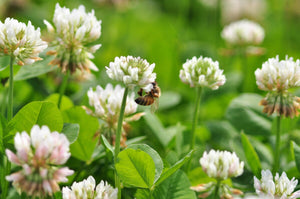

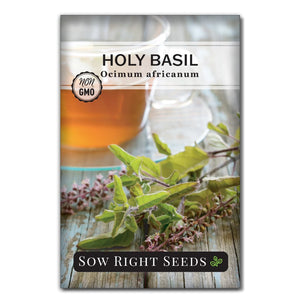
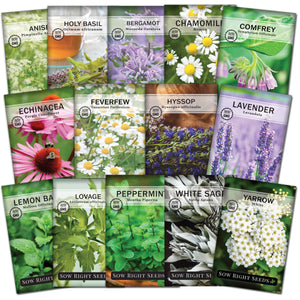
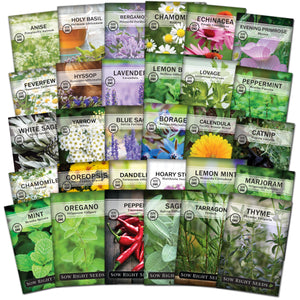
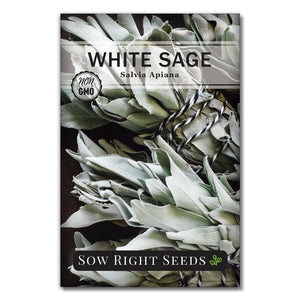
Leave a comment